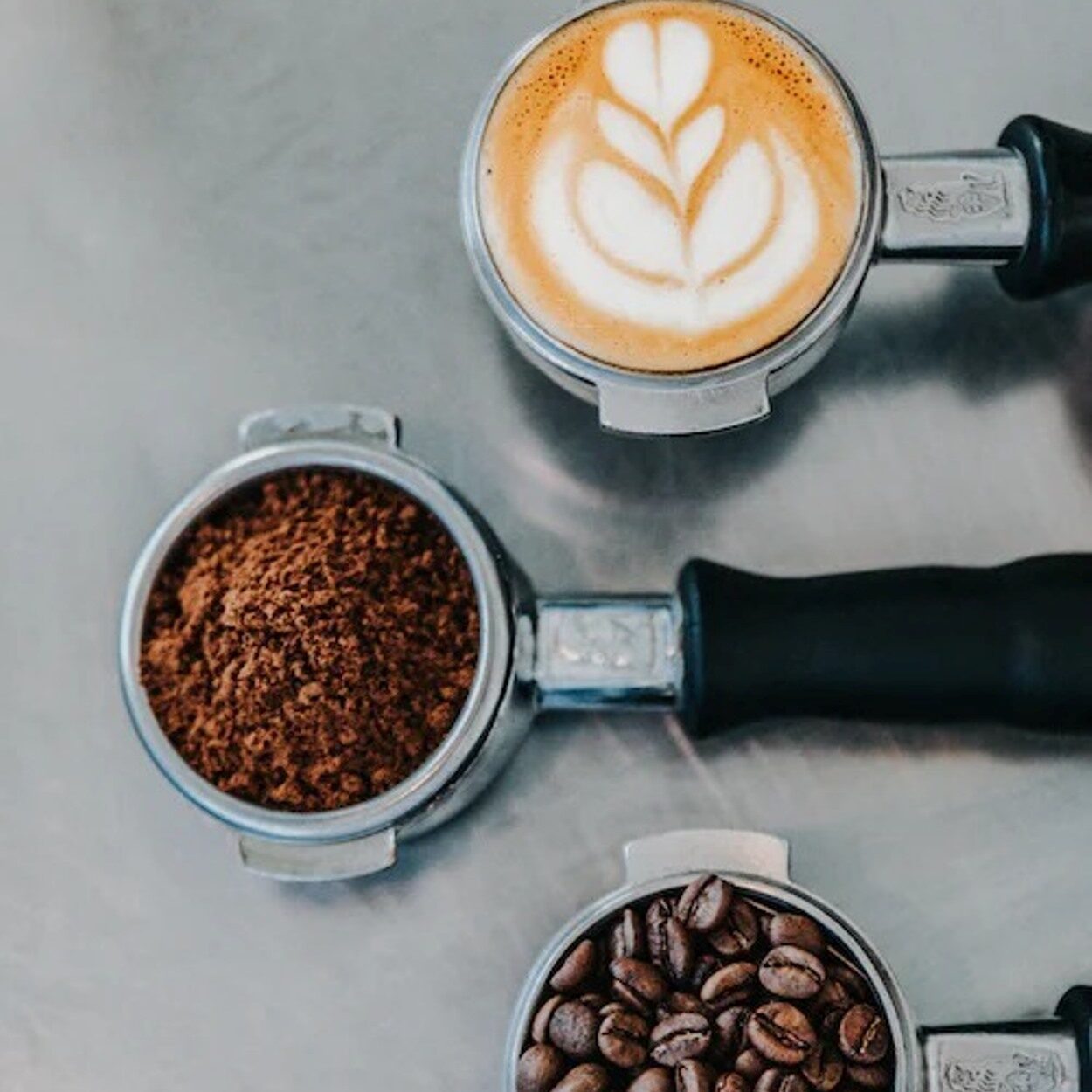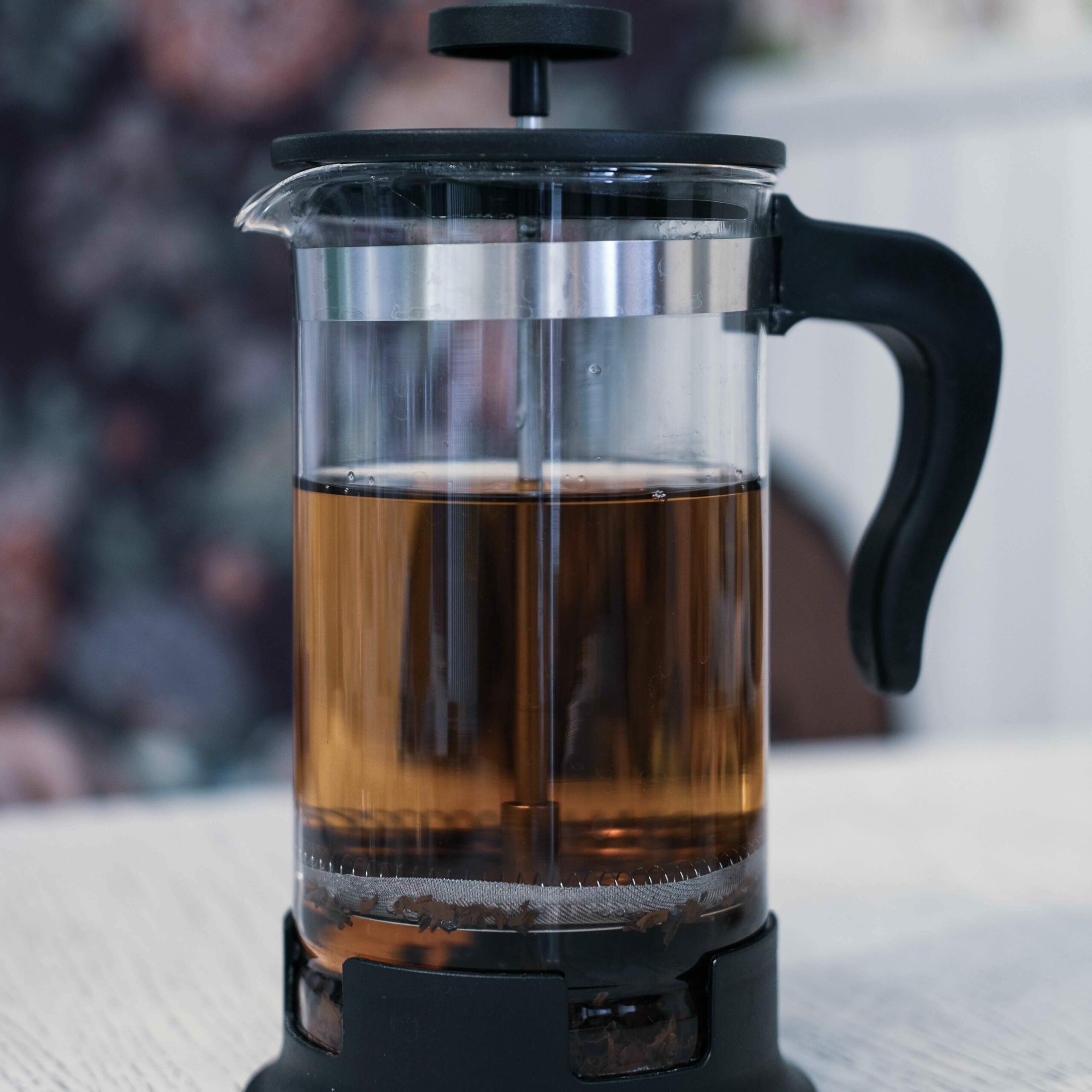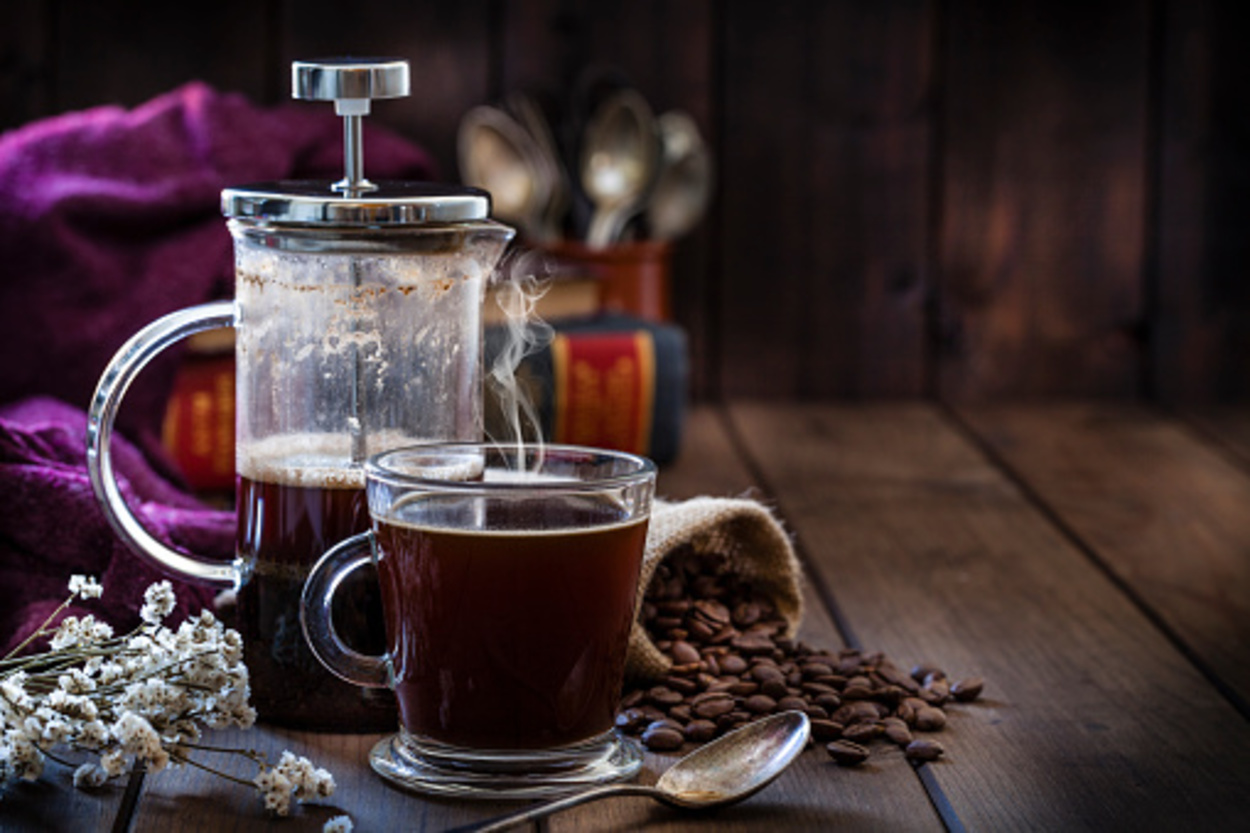Coffee can be prepared using various methods such as drip brewing, espresso, French press, or cold brew. It can be experienced in black or with additives like milk, cream, or sugar.
Coffee encompasses caffeine, a natural energy that provides a strength boost. It is cherished for its taste, aroma, and stimulating effects.
French roast is a sort of dark roast, but because it is roasted for a longer period of time, it is darker than other dark roast mixes. In comparison to other dark-roasted beans, French roast produces a dark chocolate color and a deeper, maltier flavor profile.
Do you like the relishing notes of French roast beans? Or do you prefer dark roast coffee beans? Coffee aficionados notice a clear difference between these two-roast levels.
This blog post will explain the detailed difference between French and dark roast coffee beans and help you decide best.
Coffee Beans
Coffee beans originated from the Coffee plant. They are the primary ingredient used to make coffee. Coffee beans are typically green when harvested and undergo several processes to transform them into the familiar roasted beans used for brewing coffee.

There are two main groups of coffee beans: Arabica and Robusta.
Arabica beans are considered of higher quality and have a more delicate flavor profile. They are grown at higher altitudes and account for most coffee production worldwide.
Robusta beans have a more pungent and bitter taste and are often used in blends or for producing instant coffee.
The coffee bean roasting process involves applying heat to the green beans, causing chemical changes that develop their flavors and aromas. Roasting levels can vary from light to dark, producing different taste profiles.
Lighter roasts generally have brighter and more acidic flavors, while darker roasts are bolder and more affluent.
Once roasted, coffee beans can be ground and brewed using various methods such as drip brewing, espresso, French press, or pour-over. Grinding the beans before brewing helps to extract the flavors and aromas more efficiently.
Coffee beans are known for containing caffeine, a natural stimulant that stimulates coffee consumption’s energizing effects. However, it’s important to note that decaffeinated coffee beans are also available for those who prefer to limit their caffeine intake.
French Roast
French roast is a coffee roast level characterized by the beans’ dark, nearly black appearance. It is one of the darkest roasts known for its bold and intense flavor.
During the French roast process, coffee beans are roasted at high temperatures until they reach a dark color and develop an oily surface.
This extended roasting time leads to the breakdown of sugars and oils within the beans, resulting in a flavor profile often described as smoky, rich, and bitter.

Taste of French Roast
The taste of French roast coffee is characterized by bold and intense flavors resulting from the extended roasting process. It’s important to note that coffee tastes can vary greatly among individuals.
While some people enjoy the vibrant flavors of French roast, others may prefer lighter roasts that focus on the natural flavors or taste of the coffee beans.
Here are some familiar taste characteristics associated with French roast:
Smoky Flavor
French roast coffee often has a pronounced smoky flavor. The extended roasting time can lead to charred or burnt undertones, contributing to smokiness.
Rich and Bitter
French roast coffee tends to have a rich, deep flavor profile. It can be described as bittersweet, with a prominent bitterness from the roasted beans.
The offense is often balanced by a certain richness and depth that some coffee enthusiasts enjoy.
Low Acidity
French roast coffee typically has reduced acidity compared to lighter roasts. The prolonged roasting process can mellow the edge, producing a smoother, less acidic taste.
Full Body
French roast coffee is known for its heavy body and mouthfeel. It often has a thick and velvety texture that coats the palate.
Minimal Origin Characteristics
French roast coffee can diminish some of the original flavor characteristics of the coffee bean variety. Instead, the focus is on the bold, roasted flavors, with the individual nuances of the bean variety taking a backseat.
Types of French Roast
A dark color and intense flavor typically characterize French roast. While there may not be distinct “types” of French roast coffee, there can be variations in the roasting process and flavor profiles.
Some French roast styles or variations are as follows:
- Traditional French Roast is the classic style with a deep, dark brown to almost black color. The beans are roasted till they reach the second crack, resulting in a heavy-bodied cup with smoky, bold flavors and low acidity.
- Light French Roast offers a lighter version of French roast where the beans are roasted for a shorter time, just before the second crack. This results in a medium to dark brown color, a bit less oily surface, and a slightly milder flavor compared to traditional French roast.
- Single Origin French Roast can be applied to coffee beans from various regions worldwide. Each origin has its unique characteristics, and when roasted to the French roast level, they can yield different flavor profiles. For example, you may find single-origin French roast beans from regions like Colombia, Ethiopia, Sumatra, or Brazil, each with distinct flavor notes.
- Organic or Fair-Trade French Roast coffees are labeled as organic or fair trade, indicating that the beans were grown using organic farming practices or that the coffee farmers received fair compensation for their produce. These designations focus on sustainability, environmental consciousness, and social responsibility.
Dark Roast Coffee
Dark roast coffee refers to a coffee bean roasted for extended periods, resulting in a darker and more robust flavor profile. The beans undergo higher temperatures during roasting and are roasted longer than in lighter roasts.
This extended roasting time causes the beans to develop a deep brown or almost black color and a shiny, oily surface.
Dark roast coffee typically has a bolder and more intense flavor than lighter roasts. The extended roasting process can decrease the coffee’s acidity while enhancing the tastes associated with roasting, such as smokiness, caramelization, and even slight bitterness.
The longer roasting time also reduces the original characteristics of the coffee beans, such as the specific origin flavors and nuances, giving way to a more generic taste.
Dark roast coffee is often associated with a fuller body and a rich, heavy mouthfeel. It is commonly used to brew espresso and is popular among those who prefer a stronger and more pronounced flavor in their coffee.
However, it’s vital to note that the specific flavor profile of dark roast coffee can vary dependent on the origin and quality of the beans used and the roasting techniques employed by the coffee roaster.
Taste of Dark Roast
Bold and intense flavors can characterize the taste of dark roast coffee, although specific profiles can vary depending on the type of beans, origin, and roasting techniques.
Here are some familiar taste characteristics associated with dark roast coffee:
Bold and Robust
Dark roast coffee tends to have a strong and pronounced flavor. It often exhibits a rich, full-bodied taste that can be bold, hearty, or even smoky.
Bittersweet and Chocolatey
Dark roast coffee often carries bittersweet notes reminiscent of dark chocolate or cocoa. Long roasting can bring out these flavors and contribute to the overall depth of the coffee’s taste.
Earthy and Spicy Undertones
Some dark roast coffees may exhibit earthy or woody undertones, resembling flavors like cedar or tobacco. Additionally, you may notice hints of spices such as cinnamon, nutmeg, or even a slight peppery note in specific dark roasts.
Caramelization and Toasted Sugar
The extended roasting process leads to caramelization of the sugars present in the coffee beans, resulting in flavors of toasted sugar or caramel. It can add a pleasant sweetness to the coffee’s taste profile.
Slight Bitterness
Dark roast coffees may have a slight bitterness due to the more prolonged exposure to heat during roasting. While bitterness varies depending on personal preference and the specific roast, it can contribute to the complexity of the coffee’s flavor.

Types of Dark Roast
When it comes to different types of dark roast coffee, variations can arise based on factors such as roasting level, bean origin, and blending techniques.
While there is no standardized classification, here are a few types of dark roast that you may come across:
- Italian Roast is another popular dark roast level, slightly lighter than French roast. The beans are roasted till they reach a dark brown color with a shiny surface. Italian roast coffee has a rich, full-bodied flavor with notes of bittersweet chocolate and a slightly bitter aftertaste.
- Espresso Roast refers to beans specifically roasted for making espresso. It is generally a dark roast level that produces an intense and concentrated coffee flavor, suitable for brewing espresso shots. Espresso roasts can vary in intensity, but they typically exhibit a robust, bold taste with caramelized undertones.
- Single-Origin Dark Roast focuses on beans sourced from a specific region or country. These coffees aim to highlight the unique flavor profiles of the origin, even amidst the dark roast. For example, you may find single-origin dark roasts from Colombia, Ethiopia, or Sumatra, each offering distinct taste characteristics.
- Blended Dark Roast combine beans from different regions or varieties to create a specific flavor profile. Roasters may mix beans with complementary characteristics to achieve a balanced and consistent taste. Blends can vary widely, offering a range of flavor notes such as smokiness, sweetness, or spiciness.
Difference Between French Roast and Dark Roast Coffee
| Characteristics | French Roast | Dark Roast |
| Roasting Level | French roast is a specific roast level that is among the darkest available. | Dark roast is a broader term that encompasses a range of roast levels. |
| Bean Appearance | It is almost black with a shiny, oily surface. | Dark roast beans can vary in color and may or may not exhibit as much oil on the surface. |
| Flavor Profile | French roast typically has a bold, intense flavor with prominent smoky and charred undertones, bittersweet chocolate notes, and low acidity. | Dark roast, as a general term, can have a variety of flavor profiles, but it often exhibits a bold and robust taste. |
| Preferences and Variability | French roast is favored by those who enjoy a robust, heavy-bodied coffee with pronounced smoky flavors. | Dark roast offers a broader range of taste profiles to cater to different preferences. |
Conclusion
- French roast is typically among the darkest roast levels, while dark roast is a broader term encompassing various roast levels.
- French roast produces beans with an almost black color and a shiny, oily surface, while dark roast can vary in color and may not always have the same level of darkness or oiliness.
- French roast is known for its bold, intense flavor with strong smoky, charred notes and bittersweet, dark chocolate flavors. Generally, the dark roast can have a range of flavor profiles, from bold and robust to more nuanced and balanced.
- French roast often exhibits lower acidity and a heavy body, while dark roast can vary in acidity levels and body.
- The terms “French roast” and “dark roast” are sometimes used interchangeably, causing some overlap and confusion, but understanding their distinctions can help choose the desired flavor profile.

